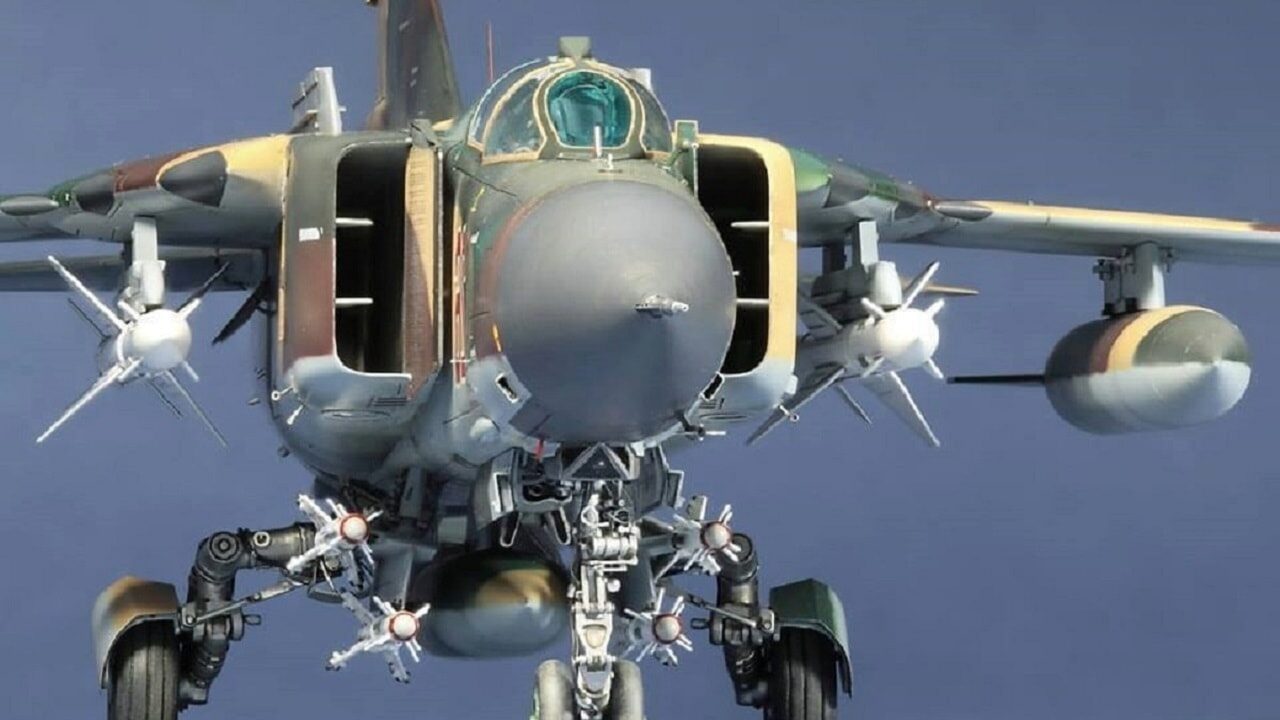Russia surely has many powerful weapons platforms that are among the most lethal to ever be used in warfare. And yet, Moscow has quite a few lesser-known systems that were just god awful. As this former U.S. Air Force pilot explains, the MiG-23 was not a very good aircraft for many clear and obvious reasons: Pity the poor MiG-23 “Flogger” jet fighter. Built to replace the older – as in 1955 vintage – MiG-21 Fishbed, and intended to contend with America’s F-4 Phantom, the MiG-23 instead became the proverbial “redheaded stepchild” of Soviet-designed fighters. Instead of living up to its NATO codename “Flogger” in actual aerial combat, the plane far more often ended up on the receiving end of the proverbial floggings.
Not Necessarily Born to Fail…
On paper, the MiG-23 didn’t seem like such a bad aircraft when it was developed. In fact, its variable “swing” wing geometry and advanced radar and fire control systems made it a fairly advanced aircraft when it was first introduced in 1970 and began entering operational service in 1971. Of particular note to its pilots was a beyond-visual-range (BVR) intercept capability from more powerful onboard sensors. In addition, the fighter had robust landing gear that enabled it to operate from short, remote runways.
…But Built On the Cheap
However, the Soviets purposely designed the Flogger as a lower-cost export fighter and therefore didn’t build into it the sort of effort and quality control that would be expected for a fighter jet intended primarily for defending the precious “Rodina” (Motherland) itself. The Soviet arms industry certainly had no shortage of customers for the MiG-23, as it was purchased by not only every member nation of the Warsaw Pact but by a veritable laundry list of official Communist allies as well as ostensible Non-Aligned Movement (NAM) states around the globe. This customer list included Algeria, Cuba, India, North Korea, and Syria.
The phrase “penny wise, pound foolish” comes to mind; the plane was reported to be difficult to fly and expensive to maintain, while its engines had a short service life. And then there was the warbird’s combat record. As noted by 19FortyFive Senior Editor Peter Suciu:
“There is no ambiguity here: the MiG-23 boasts a long, well-documented, and deeply embarrassing service record. The full extent of its failures is too great to recount in detail, but here are a few highlights. Over a dozen Syrian MiG-23 jet fighters were shot down by Israeli F-15s and F-16s throughout the Arab-Israeli Wars. Iraqi MiG-23 jet fighters also fared even more poorly against Iran during the Iran-Iraq War, reportedly suffering upwards of fifty losses against Iranian F-14s, F-5s, and F-4s. Libyan MiG-23s were routinely outperformed by Egyptian MiG-21 jet fighters during the Libyan-Egyptian War, and two of these fighters were destroyed by two U.S. F-14 Tomcats during the 1989 Tobruk skirmish.”
During Operation Desert Storm in 1991, one lucky Iraqi Air Force (IqAF) MiG-23 pilot managed at least a token bit of success when he damaged an F-111 Aardvark with an R-24T missile as the American fighter-bomber was on a bombing run. The Aardvark still managed to return safely to base, and this partial victory was slim comfort for the IqAF in light of the seven Floggers they lost to F-15Cs in air-to-air combat.
The Lingering Flogger
Despite these design flaws and a poor combat record alike, the MiG-23 has soldiered on. The Russians built 5,000 Floggers of all types between 1967 and 1985, and the Russian Air Force kept them in service until 1999. Meanwhile, it still remains in the aerial arsenals of Angola, Ethiopia, North Korea, and Syria.
Crew: One (Pilot)
Length: 54.7 feet (16.7 meters)
Wingspan: 45.6 feet (13.9 meters) fully spread; 25.26 feet (7.7 meters) fully swept
Height: 15.81 feet (4.82 meters)
Empty weight: 10.2 tons
Maximum takeoff weight: 17.8 tons
Armament: One twin-barreled 23mm GSh-23L cannon; six air-to-air missiles (mixture of infrared-homing close-range, AA-2 “Atoll” or AA-8 “Aphid”, and medium-range AA-7 “Apex” missiles)
Engine: One Tumansky R-29-300 turbojet of approx. 27,500 lbs (12,473 kg) thrust
Maximum speed: Approx. Mach 2.4 (1,553 mph/2,499 kph)
Wing sweep settings: 16, 45, and 72 degrees; adjustable in flight
Christian D. Orr is a former Air Force officer, Federal law enforcement officer, and private military contractor (with assignments worked in Iraq, the United Arab Emirates, Kosovo, Japan, Germany, and the Pentagon). Chris holds a B.A. in International Relations from the University of Southern California (USC) and an M.A. in Intelligence Studies (concentration in Terrorism Studies) from American Military University (AMU). He has also been published in The Daily Torch and The Journal of Intelligence and Cyber Security.

